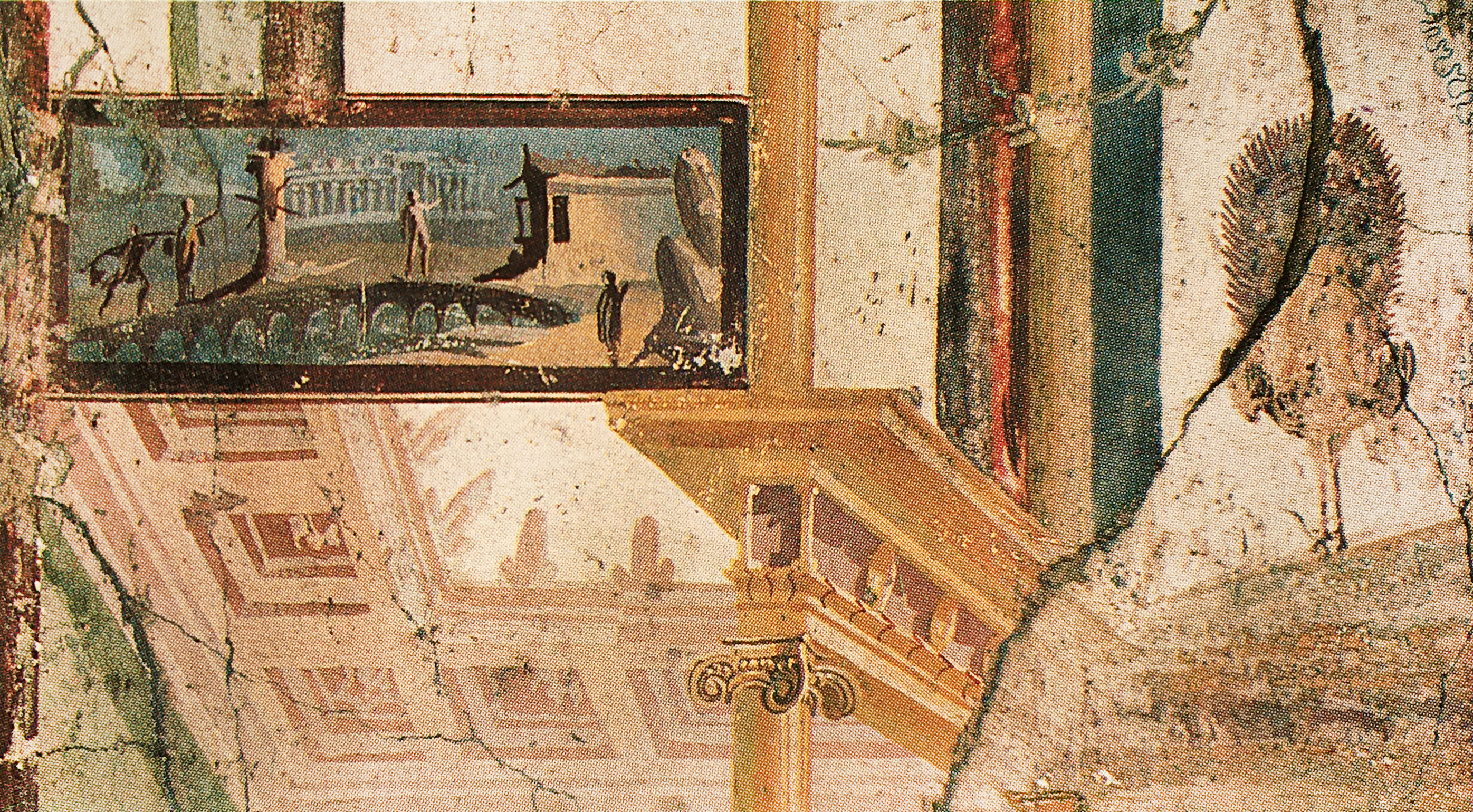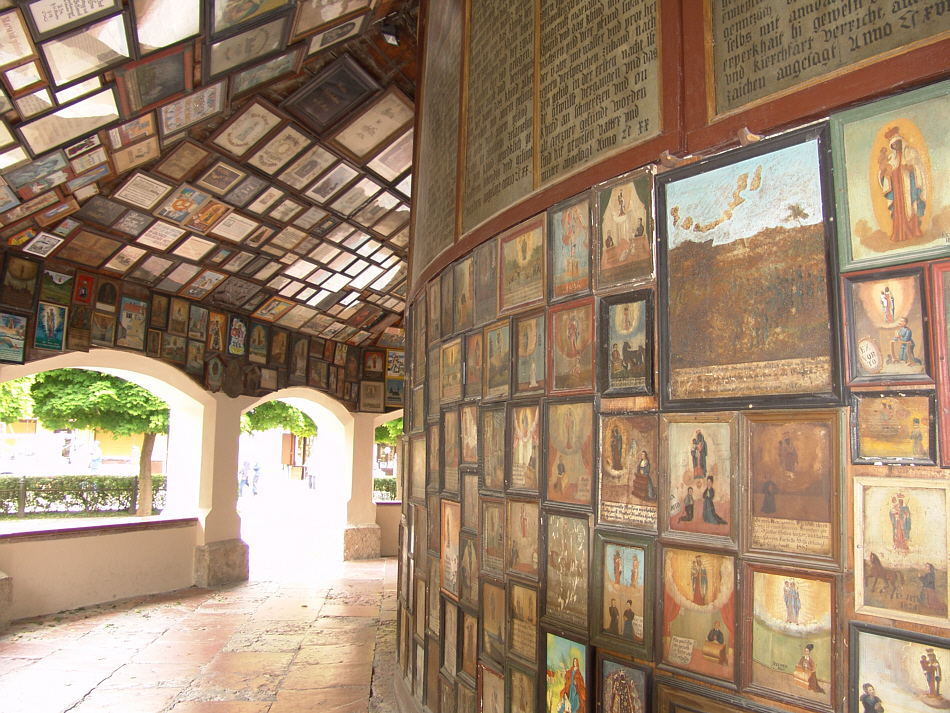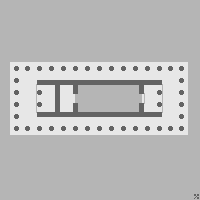|
Pinax
In the modern study of the culture of ancient Greece and Magna Graecia, a ''pinax'' (Greek: πίναξ; : ''pinakes'', πίνακες, meaning 'board') is a votive tablet of painted wood, or terracotta, marble or bronze relief that served as a votive object deposited in a sanctuary or as a memorial affixed within a burial chamber. Such ''pinakes'' feature in the classical collections of most comprehensive museums. In the Third and Fourth Style of ancient Roman mural painting, a ''pinax'' was a painted framed picture usually in the main zone of the wall surface. Other uses To the ancient Greeks ''pinax'' seems also to have been a general term for a plate, but this is generally not followed in modern archaeological usage. In daily life ''pinax'' might equally denote a wax-covered writing tablet. In Christian contexts, painted icons ("images") are ''pinakes''. In the theatre of ancient Greece, they were images probably usually painted on cloth, but also carved either in ston ... [...More Info...] [...Related Items...] OR: [Wikipedia] [Google] [Baidu] |
Magna Graecia
Magna Graecia refers to the Greek-speaking areas of southern Italy, encompassing the modern Regions of Italy, Italian regions of Calabria, Apulia, Basilicata, Campania, and Sicily. These regions were Greek colonisation, extensively settled by Greeks beginning in the 8th century BC. Initially founded by their ''metropoleis'' (mother cities), the settlements evolved into independent and powerful Greek city-states (''poleis''). The settlers brought with them Ancient Greece, Hellenic civilization, which over time developed distinct local forms due to both their distance from Greece and the influence of the indigenous peoples of southern Italy. This interaction left a lasting imprint on Italy, including on Ancient Rome, Roman culture. The Greek settlers also influenced native groups such as the Sicels and the Oenotrians, many of whom adopted Greek culture and became Hellenization, Hellenized. In areas like architecture and urban planning, the colonies sometimes surpassed the achievem ... [...More Info...] [...Related Items...] OR: [Wikipedia] [Google] [Baidu] |
Theatre Of Ancient Greece
A Theatre, theatrical culture flourished in ancient Greece from 700 BC. At its centre was the Polis, city-state of Classical Athens, Athens, which became a significant cultural, political, and religious place during this period, and the theatre was institutionalised there as part of a festival called the Dionysia, which honoured the god Dionysus. Greek tragedy, Tragedy (late 500 BC), Ancient Greek comedy, comedy (490 BC), and the satyr play were the three dramatic genres emerged there. Athens exported the festival to its numerous colonies. Modern Western theatre comes, in large measure, from the theatre of ancient Greece, from which it borrows technical terminology, classification into genres, and many of its theme (arts), themes, stock characters, and plot elements. Etymology The word , from which the word "tragedy" is derived, is a compound (linguistics), compound of two Greek language, Greek words: or "goat" and meaning "song", from . This etymology indicates a link with th ... [...More Info...] [...Related Items...] OR: [Wikipedia] [Google] [Baidu] |
Votive Offering
A votive offering or votive deposit is one or more objects displayed or deposited, without the intention of recovery or use, in a sacred place for religious purposes. Such items are a feature of modern and ancient societies and are generally made to gain favor with supernatural forces. While some offerings were apparently made in anticipation of the achievement of a particular wish, in Western cultures from which documentary evidence survives it was more typical to wait until the wish had been fulfilled before making the offering, for which the more specific term ex-voto may be used. Other offerings were very likely regarded just as gifts to the deity, not linked to any particular need. In Buddhism, votive offering such as construction of stupas was a prevalent practice in Ancient India, an example of which can be observed in the ruins of the ancient Vikramshila University and other contemporary structures. Votive offerings have been described in historical Roman era and Gree ... [...More Info...] [...Related Items...] OR: [Wikipedia] [Google] [Baidu] |
House Of The Prince Of Naples In Pompeii Plate 164 Exedra South Wall Detail MH
A house is a single-unit residential building. It may range in complexity from a rudimentary hut to a complex structure of wood, masonry, concrete or other material, outfitted with plumbing, electrical, and heating, ventilation, and air conditioning systems.Schoenauer, Norbert (2000). ''6,000 Years of Housing'' (rev. ed.) (New York: W.W. Norton & Company). Houses use a range of different roofing systems to keep precipitation such as rain from getting into the dwelling space. Houses generally have doors or locks to secure the dwelling space and protect its inhabitants and contents from burglars or other trespassers. Most conventional modern houses in Western cultures will contain one or more bedrooms and bathrooms, a kitchen or cooking area, and a living room. A house may have a separate dining room, or the eating area may be integrated into the kitchen or another room. Some large houses in North America have a recreation room. In traditional agriculture-oriented societies, domes ... [...More Info...] [...Related Items...] OR: [Wikipedia] [Google] [Baidu] |
Alte Pinakothek
The Alte Pinakothek (, ''Old Pinakothek'') is an art museum located in the Kunstareal area in Munich, Germany. It is one of the oldest galleries in the world and houses a significant collection of Old Master paintings. The name Alte (Old) Pinakothek refers to the time period covered by the collection—from the fourteenth to the eighteenth century. The Neue Pinakothek, re-built in 1981, covers nineteenth-century art, and Pinakothek der Moderne, opened in 2002, exhibits modern art. All three galleries are part of the Bavarian State Painting Collections, an organization of the Free state of Bavaria. The building History of the building The Alte Pinakothek was the largest museum in the world and structurally and conceptually well advanced through the convenient accommodation of skylights for the cabinets. Even the Neo-Renaissance exterior of the Pinakothek clearly stands out from the castle-like museum type common in the early 19th century. It is closely associated with ... [...More Info...] [...Related Items...] OR: [Wikipedia] [Google] [Baidu] |
Art Museum
An art museum or art gallery is a building or space for the display of art, usually from the museum's own Collection (artwork), collection. It might be in public or private ownership, be accessible to all, or have restrictions in place. Although primarily concerned with Visual arts, visual art, art museums are often used as a venue for other cultural exchanges and artistic activities, such as lectures, jewelry, performance arts, music concerts, or poetry readings. Art museums also frequently host themed temporary exhibitions, which often include items on loan from other collections. Terminology An institution dedicated to the display of art can be called an art museum or an art gallery, and the two terms may be used interchangeably. This is reflected in the names of institutions around the world, some of which are considered art galleries, such as the National Gallery in London and Neue Nationalgalerie in Berlin, and some of which are considered museums, including the Metropo ... [...More Info...] [...Related Items...] OR: [Wikipedia] [Google] [Baidu] |
Cella
In Classical architecture, a or naos () is the inner chamber of an ancient Greek or Roman temple. Its enclosure within walls has given rise to extended meanings: of a hermit's or monk's cell, and (since the 17th century) of a biological cell in plants or animals. Greek and Roman temples In ancient Greek and Roman temples, the ''cella'' was a room at the center of the building, usually containing a cult image or statue representing the particular deity venerated in the temple. In addition, the ''cella'' might contain a table to receive supplementary votive offerings, such as votive statues of associated deities, precious and semi-precious stones, helmets, spear and arrow heads, swords, and war trophies. No gatherings or sacrifices took place in the ''cella'', as the altar for sacrifices was always located outside the building along the axis and temporary altars for other deities were built next to it. The accumulated offerings made Greek and Roman temples virtual treasuri ... [...More Info...] [...Related Items...] OR: [Wikipedia] [Google] [Baidu] |
Vitruvius
Vitruvius ( ; ; –70 BC – after ) was a Roman architect and engineer during the 1st century BC, known for his multi-volume work titled . As the only treatise on architecture to survive from antiquity, it has been regarded since the Renaissance as the first book on architectural theory, as well as a major source on the canon of classical architecture. It is not clear to what extent his contemporaries regarded his book as original or important. He states that all buildings should have three attributes: , , and ("strength", "utility", and "beauty"), principles reflected in much Ancient Roman architecture. His discussion of perfect proportion in architecture and the human body led to the famous Renaissance drawing of the ''Vitruvian Man'' by Leonardo da Vinci. Little is known about Vitruvius' life, but by his own descriptionDe Arch. Book 1, preface. section 2. he served as an artilleryman, the third class of arms in the Roman military offices. He probably served as a senior of ... [...More Info...] [...Related Items...] OR: [Wikipedia] [Google] [Baidu] |
Pottery Of Ancient Greece
Pottery, due to its relative durability, comprises a large part of the archaeological record of ancient Greece, and since there is so much of it (over 100,000 painted vases are recorded in the Corpus vasorum antiquorum), it has exerted a disproportionately large influence on our understanding of Greek Society#Politics and society, Greek society. The shards of pots discarded or buried in the 1st millennium BC are still the best guide available to understand the customary life and mind of the ancient Greeks. There were several vessels produced locally for everyday and kitchen use, yet finer pottery from regions such as Attica was imported by other civilizations throughout History of the Mediterranean, the Mediterranean, such as the Etruscan civilization, Etruscans in Italy.John H. Oakley (2012). "Greek Art and Architecture, Classical: Classical Greek Pottery," in Neil Asher Silberman et al. (eds), ''The Oxford Companion to Archaeology, Vol 1: Ache-Hoho'', 2nd Edition, 641–644. O ... [...More Info...] [...Related Items...] OR: [Wikipedia] [Google] [Baidu] |
Orientalizing Period
The Orientalizing period or Orientalizing revolution is an art historical period that began during the later part of the 8th century BC, when art of the Eastern Mediterranean and the Ancient Near East heavily influenced nearby Mediterranean cultures, most notably Archaic Greece. The main sources were Syria, Assyria, Phoenicia, and Egypt. With the spread of Phoenician civilization by Carthage and Greek colonisation into the Western Mediterranean, these artistic trends also influenced the Etruscans and early Ancient Romans in the Italian peninsula. Style and influences During this period there arose in ancient Greek art ornamental motifs and an interest in animals and monsters that continued to be depicted for centuries, and that also spread to Roman and Etruscan art. Monumental and figurative sculpture in this style may be called Daedalic, after Daedalus, who was according to legend the founder of Greek sculpture. The period is characterized by a shift from the prevailin ... [...More Info...] [...Related Items...] OR: [Wikipedia] [Google] [Baidu] |
Artemis
In ancient Greek religion and Greek mythology, mythology, Artemis (; ) is the goddess of the hunting, hunt, the wilderness, wild animals, transitions, nature, vegetation, childbirth, Kourotrophos, care of children, and chastity. In later times, she was identified with Selene, the Lunar deity, personification of the Moon.Smiths.v. Artemis/ref> She was often said to roam the forests and mountains, attended by her entourage of nymphs. The goddess Diana (mythology), Diana is her Religion in ancient Rome, Roman equivalent. In Greek tradition, Artemis is the daughter of Zeus and Leto, and twin sister of Apollo. In most accounts, the twins are the products of an extramarital liaison. For this, Zeus' wife Hera forbade Leto from giving birth anywhere on solid land. Only the island of Delos gave refuge to Leto, allowing her to give birth to her children. In one account, Artemis is born first and then proceeds to assist Leto in the birth of the second twin, Apollo. Artemis was a kouro ... [...More Info...] [...Related Items...] OR: [Wikipedia] [Google] [Baidu] |
Rhodes
Rhodes (; ) is the largest of the Dodecanese islands of Greece and is their historical capital; it is the List of islands in the Mediterranean#By area, ninth largest island in the Mediterranean Sea. Administratively, the island forms a separate municipality within the Rhodes (regional unit), Rhodes regional unit, which is part of the South Aegean Administrative regions of Greece, administrative region. The principal town of the island and seat of the municipality is the Rhodes (city), city of Rhodes, which had 50,636 inhabitants in 2011. In 2022, the island had a population of 125,113 people. It is located northeast of Crete and southeast of Athens. Rhodes has several nicknames, such as "Island of the Sun" due to its patron sun god Helios, "The Pearl Island", and "The Island of the Knights", named after the Knights Hospitaller, Knights of Saint John of Jerusalem, who ruled the island from 1310 to 1522. Historically, Rhodes was famous for the Colossus of Rhodes, one of the Sev ... [...More Info...] [...Related Items...] OR: [Wikipedia] [Google] [Baidu] |











